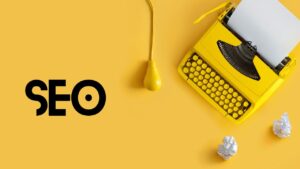How to use Digital Marketing strategy in Textile
Developing an impactful online presence in the textile industry necessitates a multifaceted approach that combines aesthetics, optimization, and engaging content strategies. Crafting a visually captivating website, infused with textile-inspired elements, colors, and textures, forms the cornerstone. From layout mimicry to interactive elements simulating fabric movement, a website can not only allure but also educate and engage textile enthusiasts. How to use Digital Marketing strategy in Textile.

There are some points to heighlight How to use Digital Marketing strategy in Textile.
Create a visually appealing website: Creating a visually appealing website that relates to textile involves integrating design elements, colors, and textures that evoke the essence and aesthetics of textiles. The website’s visual appeal can be enhanced by employing textile-inspired patterns, textures, and color schemes. Utilizing images and graphics showcasing various fabrics, weaves, or textile products can add depth and interest to the site.
The layout and structure of the website can mimic the organization of different fabric swatches, with sections or pages resembling different collections or types of textiles. Typography choices can reflect the elegance or versatility of textiles, using fonts that convey a sense of texture or craftsmanship.How to use Digital Marketing strategy in Textile.
Furthermore, incorporating interactive elements like scrollable galleries or animations that simulate the movement or draping of fabric can captivate visitors’ attention. Engaging content such as videos demonstrating the production process or stories behind different textile traditions can also enrich the user experience, making the website not just visually appealing but also informative and engaging for visitors passionate about textiles. How to use Digital Marketing strategy in Textile.
Optimizing for SEO: Optimizing for SEO in the textile industry involves implementing strategies to enhance online visibility and reach among individuals seeking textile-related products, information, or services. To do this effectively, employing relevant keywords related to textiles, fabrics types, garment types, or specific industry terms within website content, meta descriptions, titles, and image alt text is crucial.How to use Digital Marketing strategy in Textile.
Creating high-quality, informative content such as blog posts about the latest textile trends, care guides for different fabrics, or articles on sustainable textile practices can attract organic traffic. Additionally, optimizing product descriptions with keywords, clear images, and structured data markup can improve the chances of appearing in search engine results for users looking to purchase textiles or related items.How to use Digital Marketing strategy in Textile.
Furthermore, building backlinks from reputable textile-related websites, engaging in social media marketing focusing on textile enthusiasts or industry professionals, and ensuring a mobile-responsive website design contribute to a comprehensive SEO strategy in the textile niche, ultimately boosting online visibility and attracting relevant traffic.How to use Digital Marketing strategy in Textile.
Content Marketing: In the textile industry, content marketing involves creating and distributing valuable, relevant, and engaging content to attract, inform, and engage potential customers and stakeholders. This content can take various forms, including blog posts, articles, videos, social media posts, infographics, and more, specifically tailored to showcase the unique aspects of textiles, fashion trends, manufacturing processes, sustainable practices, design inspirations, and the overall value proposition of textile products.
Through content marketing, textile companies aim to educate their audience about the quality, durability, innovative features, and aesthetic appeal of their fabrics or clothing lines. This strategy helps in building brand awareness, establishing authority in the industry, and fostering trust among consumers. Moreover, content marketing allows textile businesses to connect with their target audience on a deeper level, addressing their needs, preferences, and aspirations while showcasing the versatility and creativity embedded within the textile sector.How to use Digital Marketing strategy in Textile.

Social Media Marketing: Social media marketing plays a crucial role in the textile industry by facilitating brand visibility, customer engagement, and product promotion. Textile businesses leverage social media platforms like Instagram, Facebook, and Pinterest to showcase their latest designs, fabrics, and collections. Through visually appealing content such as images, videos, and stories, textile companies can exhibit their products, thereby attracting potential customers and driving sales.
Moreover, social media platforms allow textile brands to engage directly with their audience through comments, direct messages, and live interactions. This direct communication helps in understanding customer preferences, gathering feedback, and addressing queries or concerns promptly, thereby building stronger customer relationships.
Additionally, social media enables textile businesses to run targeted advertising campaigns, reaching specific demographics interested in fashion, clothing, or home textiles. By utilizing analytics tools.How to use Digital Marketing strategy in Textile.
E-mail Marketing: Email marketing plays a crucial role in the textile industry by serving as a direct communication channel between textile businesses and their customers. Textile companies utilize email marketing to showcase new collections, promote seasonal sales, share fashion trends, and highlight product innovations. Through personalized newsletters, exclusive offers, and targeted campaigns, they engage customers, drive traffic to online stores, and nurture brand loyalty.
Additionally, email marketing allows textile businesses to gather valuable customer insights through analytics. By tracking open rates, click-through rates, and customer interactions, companies can refine their marketing strategies, tailor content to specific customer segments, and enhance overall customer experiences. This direct and personalized approach within the textile industry helps boost sales, strengthens brand connections, and fosters long-term relationships with consumers.How to use Digital Marketing strategy in Textile.
Utilize Analytics: Analytics in the textile industry can be harnessed across various facets to drive informed decisions and enhance operational efficiency. Firstly, predictive analytics aids in forecasting demand patterns, enabling textile manufacturers to optimize production schedules, manage inventory levels, and prevent overstock or shortages. Customer behavior analytics helps in understanding consumer preferences, allowing businesses to tailor product offerings and marketing strategies accordingly. Operational analytics assists in streamlining manufacturing processes, identifying inefficiencies, and optimizing resource allocation for better cost management. Additionally, supply chain analytics enhances logistics, ensuring timely deliveries and reducing lead times.
Sustainability analytics tracks environmental impact, aiding in the development of eco-friendly practices. Overall, leveraging analytics empowers textile businesses to make data-driven decisions, improve product development, enhance customer satisfaction, reduce operational costs, and adapt swiftly to market changes, thereby staying competitive in the dynamic textile industry.How to use Digital Marketing strategy in Textile.
Customer and review testimonial: In the textile industry, customer reviews and testimonials play a pivotal role in digital marketing strategies. These reviews act as social proof, influencing potential buyers’ decisions when purchasing clothing, fabrics, or related products online. Positive reviews highlighting the quality, comfort, durability, and design of textile items can significantly impact a consumer’s perception and trust in a brand or product.
Moreover, in the digital realm, customer reviews and testimonials contribute to search engine optimization (SEO) efforts. They provide fresh and relevant user-generated content, improving a website’s ranking on search engine results pages. This content also engages potential customers, fostering a sense of community and trust around the brand.How to use Digital Marketing strategy in Textile.
Additionally, in the era of social media and online shopping, sharing customer testimonials through various platforms like Instagram, Facebook, or dedicated review sites amplifies brand visibility and credibility. Textile companies often leverage these testimonials in their marketing campaigns to resonate with their target audience, ultimately driving sales and fostering brand loyalty in the highly competitive textile industry.How to use Digital Marketing strategy in Textile.

In the ever-evolving textile industry, establishing a strong online presence demands a comprehensive strategy integrating aesthetics, optimization, engaging content, and consumer trust. From visually appealing websites adorned with textile-inspired elements to SEO strategies driving visibility, the emphasis lies on captivating and educating the audience.
Video Marketing: Video marketing in the textile sector utilizes visual storytelling to showcase the artistry, quality, and versatility of fabric and garment offerings. These videos portray the tactile nature of textiles, presenting them in vivid detail to evoke emotions and inspire the audience. They often encompass a range of formats, from product showcases that highlight intricate designs and textures to engaging tutorials demonstrating styling techniques or DIY projects using the textiles.
Moreover, behind-the-scenes glimpses into the manufacturing process illustrate craftsmanship and sustainable practices, fostering a deeper connection with the brand. Customer testimonials and influencer collaborations further reinforce credibility and trust, while brand storytelling videos communicate the heritage and values, forging an emotional bond with viewers.How to use Digital Marketing strategy in Textile.
These videos are strategically shared across platforms like YouTube, social media, and brand websites to captivate and engage a broader audience. Ultimately, video marketing in the textile sector serves as a powerful tool to not just exhibit products but to create an immersive experience that resonates with potential customers, driving interest and purchase intent.How to use Digital Marketing strategy in Textile.
Pay-Per-Click advertising: Pay-per-click (PPC) advertising is a digital marketing model where advertisers pay a fee each time their ad is clicked. It’s a method used to drive traffic to websites rather than earning visits organically. PPC ads appear prominently in search engine results or on various online platforms, targeting specific keywords, demographics, or user behaviors.How to use Digital Marketing strategy in Textile.
For instance, in search engine advertising, like Google Ads, advertisers bid on keywords relevant to their target audience. When users search for those keywords, ads appear at the top of the search results. The cost of each click varies based on the competitiveness of the keyword and its relevance to the ad.How to use Digital Marketing strategy in Textile.
In social media PPC, platforms like Facebook, Instagram, or LinkedIn allow advertisers to create targeted ads based on user interests, demographics, and behaviors. Advertisers set budgets and specify the audience they want to reach. These ads appear in users’ feeds, and the advertiser pays when someone clicks on the ad.
PPC advertising offers precise targeting, measurable results, and control over ad spend. It enables businesses to reach potential customers actively searching for their products or services, helping increase brand visibility, website traffic, and conversions. Regular monitoring, optimization, and refining of PPC campaigns are essential to maximize their effectiveness and return on investment (ROI).

Conclusion:
In the competitive landscape of the textile industry, digital marketing strategies play a pivotal role in amplifying brand presence and driving customer engagement. A comprehensive approach begins with creating visually stunning websites that resonate with the essence of textiles, integrating design elements, colors, and textures to evoke a sensory experience. Such websites use textile-inspired patterns, vivid imagery, and typography that mirror craftsmanship, offering an immersive journey through collections and fabric swatches.How to use Digital Marketing strategy in Textile.
Optimizing for SEO further elevates visibility by strategically incorporating relevant keywords, informative content, and structured data to captivate those seeking textile-related information. Content marketing becomes pivotal, harnessing diverse formats like blogs, videos, and social media posts to showcase textile nuances, fashion trends, and sustainable practices, fostering brand authority and connecting with consumers on a deeper level.How to use Digital Marketing strategy in Textile.
Social media acts as a dynamic stage, where platforms like Instagram and Facebook showcase textile products, fostering direct interactions and targeted advertising. Email marketing becomes a direct channel for exclusive offers, new collections, and personalized engagement, nurturing long-term relationships and bolstering brand loyalty.
Integrating analytics enables data-driven decision-making, guiding production, customer insights, and sustainability efforts, ensuring agility and competitiveness. Customer reviews and testimonials serve as social proof, influencing consumer perceptions and contributing to SEO efforts, while video marketing becomes a compelling storytelling tool, showcasing the artistry and versatility of textiles, forging emotional connections and driving purchase intent.
Pay-per-click advertising stands out by precisely targeting audiences seeking textile products, driving traffic, and boosting conversions. Altogether, this holistic digital marketing ecosystem caters to the multifaceted demands of the textile industry, fostering brand resonance, customer loyalty, and sustained growth in a rapidly evolving digital landscape. Go through my another interesting Bangoli blog.